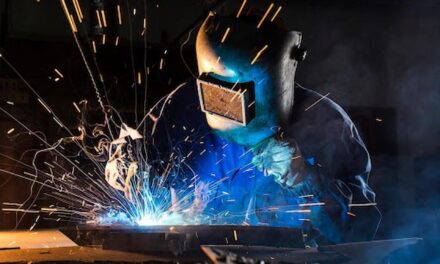
What Is Surface Mining? Methods, Uses and Key Equipment Explained

Curious about how minerals are extracted from the Earth’s surface? This article unpacks surface mining in a clear, engaging way. Learn about its methods, practical uses, and the key machinery involved. From open-pit mining to quarrying, we explain it all in simple terms—no complex jargon, just real-world insights. Whether you’re a student, researcher, or industry enthusiast, this guide delivers straightforward facts with a human touch. Read on for everything you need to know.
Mining is one of the oldest industries in the world, dating back thousands of years. But today, it’s no longer about picks and shovels. Modern methods like surface mining have revolutionised how we extract valuable materials from the earth.
This method is widely used worldwide due to its efficiency, lower cost, and ability to extract minerals located close to the surface. Let’s break down what surface mining is, how it works, and why it’s such an important part of our modern economy.
What Is Surface Mining?
Surface mining is a method of extracting minerals and other resources directly from the Earth’s surface, rather than digging deep underground. It involves removing layers of soil and rock, known as overburden, to access the deposits lying close to the top.
This approach is ideal for resources like:
- Coal
- Iron ore
- Copper
- Bauxite
- Gravel and sand
- Limestone
The biggest advantage? It’s faster and more cost-effective than underground mining.
Why Use Surface Mining?
There are many good reasons why industries rely on this method:
- Economic: Lower operating and equipment costs compared to underground mining.
- Safe: Reduced risk to workers as it avoids deep tunnels.
- High Recovery Rates: Extracts a large percentage of the available material.
- Easier Monitoring: Equipment and processes are easier to manage on the surface.
It’s particularly useful when mineral deposits are spread across large areas but not very deep.
Common Surface Mining Methods
Different types of surface mining are used depending on the type and location of the mineral. Below are the most widely used methods:
1. Open-Pit Mining
This is the most common surface mining technique. A massive pit is dug into the earth, and the ore is extracted in layers or benches.
How it works:
- Overburden is removed.
- Explosives may be used to loosen the ore.
- Trucks and shovels carry material for processing.
Used for: Gold, copper, iron, and coal.
2. Strip Mining
In this method, long strips of overburden are removed to access the underlying resource. Once one strip is mined, it is refilled, and the next is dug.
How it works:
- Ideal for flat terrains.
- Especially suited for coal seams.
Used for: Coal and lignite.
3. Mountaintop Removal
This method is mostly used in hilly or mountainous regions. The top of the mountain is blasted away to reveal seams of coal underneath.
How it works:
- Explosives remove mountain tops.
- Excess earth is deposited in nearby valleys.
Used for: Coal (especially in the Appalachian region, USA).
4. Quarrying
Quarrying focuses on extracting building materials like stone, gravel, and sand.
How it works:
- Hard rocks are drilled and split into manageable sizes.
- Machinery hauls these materials to construction sites.
Used for: Granite, limestone, marble, and aggregate.
5. Dredging
This type of mining is done underwater. It involves scooping up sediments from riverbeds or ocean floors.
How it works:
- Dredgers collect sediments and process them on boats.
- Gold and tin are often collected this way.
Used for: Mineral sands, tin, and gold.
Key Equipment Used in Surface Mining
A variety of heavy equipment is essential to perform surface mining effectively. Here’s a rundown of the most common tools and machines:
1. Excavators and Shovels
Used for digging and moving large volumes of earth. These machines are the workhorses of any surface mine.
2. Drills
Drills are used to bore holes into rock so that explosives can be placed. These are crucial for breaking up hard surfaces.
3. Loaders and Haul Trucks
These carry the loosened materials to the processing plant. They handle huge weights and are key to fast material handling.
4. Crushers
Crushers reduce large rocks into smaller, manageable sizes for processing or transport.
5. Conveyor Belts
These help move materials efficiently from one point to another, especially over long distances.
6. Draglines
These massive machines are used mostly in strip mining. They have long booms and buckets that scoop up overburden and ore.
Environmental Considerations
While surface mining is practical, it comes with its own set of environmental impacts, such as:
- Loss of vegetation and wildlife
- Water pollution due to runoffs
- Air quality concerns from dust
To reduce these effects, mining companies are now adopting greener practices like:
- Land reclamation
- Dust control systems
- Water treatment methods
Regulations in many countries require companies to restore the land after mining is complete.
Industries That Depend on Surface Mining
Several industries rely on the resources extracted from surface mining. These include:
- Construction: Uses limestone, gravel, and sand.
- Energy: Coal from surface mines powers many thermal plants.
- Manufacturing: Metals like copper and iron are essential for factories.
- Technology: Materials like bauxite (for aluminium) are used in electronics.
Without surface mining, many sectors would struggle to get the raw materials they need.
The Future of Surface Mining
With technological advancements, surface mining is becoming more efficient and less environmentally harmful. Automation and AI are already being tested to:
- Improve safety
- Boost productivity
- Reduce environmental damage
This evolution includes remote-controlled equipment, real-time monitoring systems, and drone mapping.
Moreover, surface mining will play a significant role in the energy transition as demand for rare minerals grows, especially for batteries and green tech.
Conclusion:
Surface mining remains a vital tool in the global supply chain. Its speed, cost-efficiency, and ability to extract large quantities of resources make it a preferred method in many regions. With the right practices, it can meet industrial demands while reducing environmental harm.
As technology improves and sustainability becomes a key concern, surface mining will continue to evolve, striking a balance between resource extraction and ecological responsibility.
Whether you’re in the construction industry, energy sector, or simply curious about where your phone’s metals come from, understanding surface mining gives you a better look at the world beneath our feet.











